Intelligent Storing
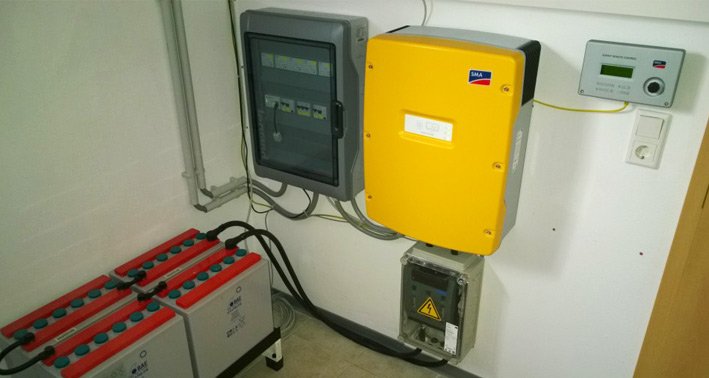
Intelligent management of battery-storage systems can save money and, at the same time, be beneficial for the utility grid. Read this article and discover what is behind all this.
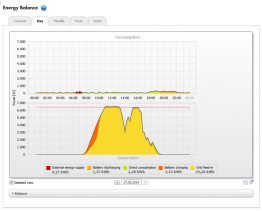
The old method of battery charging: charge in the morning and discard power at midday due to limitation
Should I charge the system as early as possible?
The previous method used by battery-storage systems to optimize self-consumption was rather simple. As soon as PV power was available, it was used to charge the battery. For this purpose, the energy meter was connected to the household’s power supply. As soon as energy was fed into the utility grid, the storage system started charging. As soon as power was drawn from the grid, the storage system was discharging. Unfortunately, this also meant that the storage system would be full by noon, when the feed-in power was limited and the PV system slid into limitation mode. This resulted in good PV power having to be discarded unused.
Today, there are a number of situations in which a PV system is no longer allowed to feed in power until the system is full. In many countries, energy storages that receive a storage subsidy are allowed to feed in only 60 percent of the maximum power output of the installed pv modules. Anything that the PV system produces in excess of this amount has to be discarded.
… Or perhaps it would be better to charge the system at midday?
On days like these, charging the battery at midday would be good both for the utility grid and your wallet. This immediately raises the question: “Can I not simply configure the battery-storage system so that it charges between 10.00 a.m. and 2.00 p.m.?”
The answer is simple. Although the concept is an easy one, it doesn’t work on either good or bad days.
It would mean that on good and bad days, the battery-storage system would be empty for a long period in the morning. It would not be able to cover any spontaneous loads, and you would immediately have to purchase electricity.
Especially on bad days, you also would discover that your battery was not fully charged in the evenings because generated PV power would only be used to charge the battery from midday onward.
Thus, it doesn’t seem like such a good idea to just charge the system at midday.
… Then perhaps it would be better to charge the system once a particular performance value has been exceeded?
Waiting until a previously defined performance value has been exceeded before charging the battery results in the same problem as only charging the system at midday. Loads in the morning are not covered because the battery is empty at this time. On bad days, the battery is often not full in the evenings.
The solution: be shrewd and charge the system when power is affordable.
The Sunny Home Manager is capable of charging the battery-storage system based on a forecast, thereby saving cash since the storage system is set up to avoid limitation as far as possible.
How does this forecast-based charging work? First, the Sunny Home Manager determines the amount of solar power that it expects to be produced by the PV system. The Sunny Home Manager also works out a forecast for household consumption. The Home Manager then generates a surplus forecast by subtracting one from the other (production forecast and consumption forecast). Only power that is not already being consumed by the household is fed into the utility grid. It applies the active power limit to the calculated surplus to see how much power would need to be discarded at midday.
If, on a sunny day, there is a lot of photovoltaic energy available, the Sunny Home Manager will already know this from the forecast that it generated in the morning and will keep as much battery capacity available for midday as is required to avoid limitation. Rather than discarding the power by means of limitation, this can now be used to charge the battery and be consumed in the evenings, for example. It also means that less electricity will need to be charged during the morning hours.
But what if the weather isn’t cooperating? Will that mean that my battery is only half full in the evenings?
On cloudy days, the Sunny Home Manager ascertains in its forecasts that there will be no energy above the limitation threshold. There is therefore no reason to wait until midday to start charging. In these circumstances, the system starts charging as early as in the morning. The same scenario also applies when the limitation is only just reached. The Sunny Home Manager then ensures that the system charges a little in the morning and the rest at midday at the time when the limitation applies. Now if, for example, in the morning a load requires electricity that exceeds the amount of photovoltaic power generated, the battery will be able to cover the demand. As soon as the load turns off, the battery can start charging again even in the morning so that additional loads can be supplied with power. Only part of the storage system is kept available for midday, which is another way of avoiding limitation.
Even better: even the loads are optimized
Alongside the storage system, the loads are also configured by the Sunny Home Manager’s energy management system to make optimum use of the solar power. Because every storage process generates losses—first when the energy is stored in the storage system and second when it is drawn from the storage system at a later point—it makes sense to consume the power directly before using a storage system. The Home Manager factors this into its planning and also operates controllable devices so that they run as cost-efficiently and grid-optimized as possible. Amounts of energy that can be used by devices as early as midday don’t need to be kept free in the battery, which means that these amounts can even be charged in the morning.
What are the preconditions of forecast-based charging?
To enable the battery to be managed by the Home Manager, too, a few preconditions must be met. These are described in the following section.
1. The devices must support forecast-based battery management.
2. A Sunny Home Manager (at least firmware version 1.11.6.R), a SMA Energy Meter and a Sunny Island battery-storage system (3.0 M / 4.4 M / 6.0 H / 8.0 H—at least firmware version 3.100) or a Sunny Boy Smart Energy or a Sunny Boy Storage are required.
The Sunny Home Manager performs the necessary updates itself (usually at night when the PV grid feed-in will not be negatively impacted by the updates). Simply activate the automatic updates for the Sunny Home Manager and inverter.
3. All energy sources (PV inverter/storage system) must be registered in the Sunny Home Manager (additional energy sources such as storage systems made by other manufacturers or CHP plants are currently not yet supported).
4. The PV system must be set up correctly in the portal. This means that:
- The system location must be configured correctly
- An active power threshold must be configured
- The inverter strings must be configured in the system properties
- Forecast-based battery management must be activated in the Sunny Home Manager properties.
Tips, tricks and background
Since the intelligent battery management function is based on forecasts generated by the Sunny Home Manager, this means that the management is only ever as good as the forecast, which can sometimes be off the mark—just like the weather forecast. This can be due to a number of reasons. One possibility is that every now and then the weather simply doesn’t match the forecast (we have been trying for some time to get Petrus on board as a partner—but have only had partial success to date).
The Sunny Home Manager learns what it observes
Of course, the forecast also factors in the consumption patterns of the household—and therein lies a common problem. People by nature are rather impatient. To illustrate this point, here is an extract from the life of a PV system owner:
An enthusiastic PV system owner sits glued to the portal display at midday and is horrified to see the limitation period inch ever closer. Minute by minute ticks by, and the intelligent energy management system is not making any visible effort to use the loads and storage system in order to avoid limitation. The power continues to rise. The active power limit will soon be reached and any minute now the limitation will briefly kick in. The PV enthusiast can no longer keep to his chair. He switches on the washing machine and the dishwasher and goes into the garage to plug in the electric car so that it can charge, and is pleased that he has been able to avoid limitation by taking action himself—but is annoyed that the Sunny Home Manager didn’t do it.
But what if we consider the situation from the point of view of the Sunny Home Manager? It identifies a sunny day ahead—and forecasts that a lot of photovoltaic power will be generated. It therefore schedules the battery-storage system and the loads in accordance with this information. In doing so, it ensures that as much energy as possible can be used by the devices and storage system. As a preference, it usually chooses the times at which there is a large amount of surplus power. Now consumption suddenly increases at midday because devices have been switched on in the household (not by the Home Manager but by the owner himself). The Sunny Home Manager is pleased to see that sufficient power is already being consumed to avoid limitation. It changes its plan and, taking into account the currently high rate of consumption, looks for new times to use the storage system and devices later in the day, when consumption has returned to a lower level.
At the same time, it also learns that a seemingly large amount of energy is required around midday. When something like this happens frequently, the Sunny Home Manager stores this knowledge and eventually stops switching on the storage system and devices at midday because past experience has shown that this household is highly likely to generate enough consumption itself to avoid limitation.
It is therefore incredibly important to leave the work to the Sunny Home Manager and stop trying to do its work yourself—unless you would like to do it yourself on every good day in the future.
More efficient the more devices are managed by the Sunny Home Manager
The storage system itself is an effective way of combating the active power limit. However, it is also beneficial to let the Sunny Home Manager automatically manage as many large devices as possible (including charging of electric vehicles, washing machine, dishwasher, tumble dryer, heat pump, immersion heater, etc.). This has two advantages:
1. The Sunny Home Manager can run the devices in an optimized, and therefore cost-efficient, manner when photovoltaic power is available or it anticipates limitation.
2. When the Home Manager manages a device itself, it knows the precise start time and power consumption. With every automatically managed large device, the consumption forecast, and thus battery planning, improves that bit more.
Conclusion
With forecast-based charging, modern storage systems can be operated in a grid-optimized and cost-efficient way with Sunny Island and Sunny Boy Smart Energy.
I hope I was able to explain to you here how forecast-based charging of a battery-storage system works. If you have any questions, please let me know. I look forward to your comments.

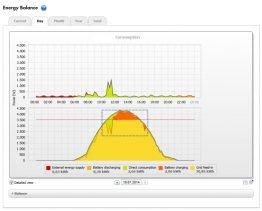
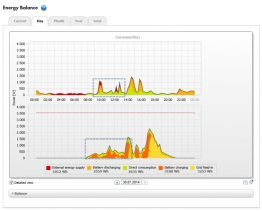
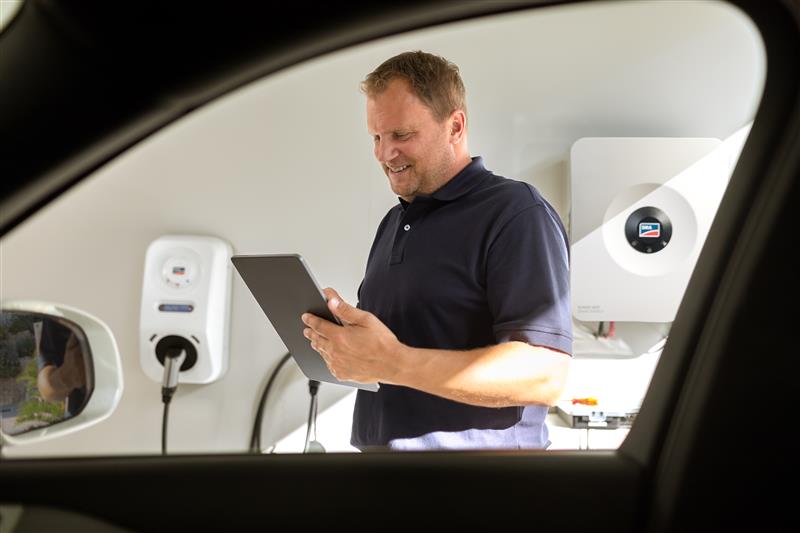
Hi My Sunny Home Manager seems to be powered by the mains only. This means that when mains fail the SHM has no power and I cannot monitor the battery capacity or battery discharge rate. Can it be powered by the Sunny Island instead?
Hi Frikkie,
Apologies for the late reply. Yes, your home manager can be powered from any source, Grid or Sunny Island. A constant source is recommended so the home manager doesn’t go off at any time.
Cheers!
hi, i have sunny island 6 kw with battery backup distrubition box .
problem is when elecric gone after 3 second later inverter goes off than on ,this is about 7-8 second later inverter would be work on antiisland mode.
what can i do about this problem ,i want to adjust like a ups
could you help me pls
thanks
am Taban from South Sudan,working as radio technician,we have got new transmiter of 1kw,how many solar penals &inverters will be require to run it?
and we need to know prices,how many pcs needed
Taban Patrick
tele :+21922013077 or tabutaban1@gmail.com
Hi Taban,
please look for a local resident dealer in your hometown. He will plan a complete system for you. For more questions feel free to send us an e-mail to SocialMedia@sma.de.
Sunny regards, Anna
As far as I understand, the home manager only works in certain countries?
Hi Axel,
it works nealry everywhere (exept in die US). You come from South Africa, don’t you? There it works 🙂
Best regards,
Sarah